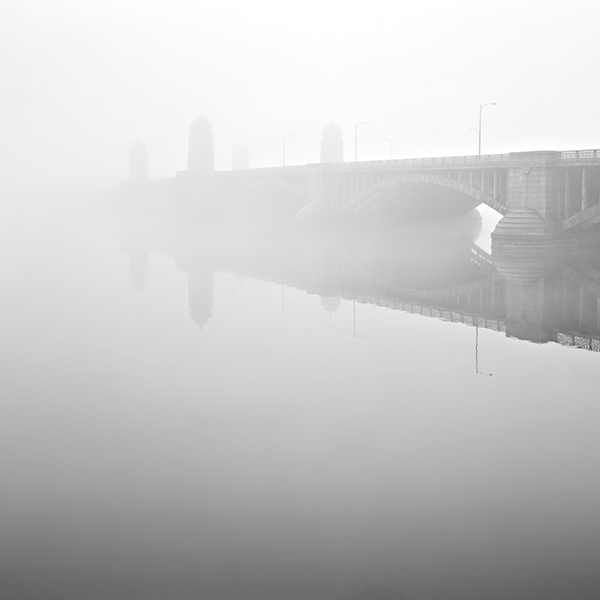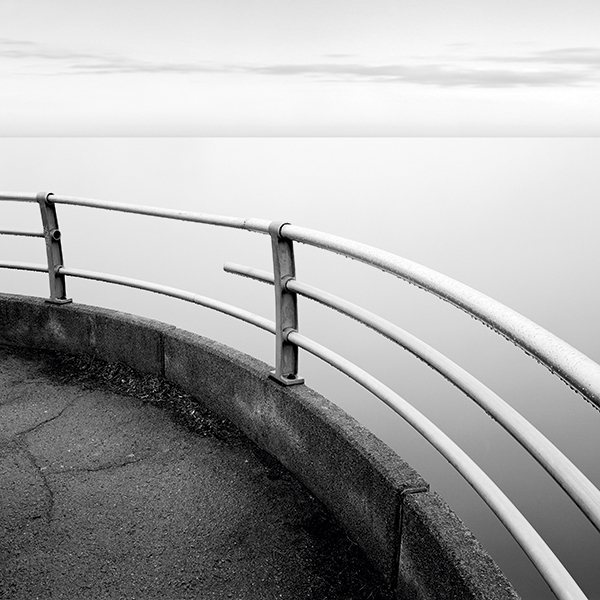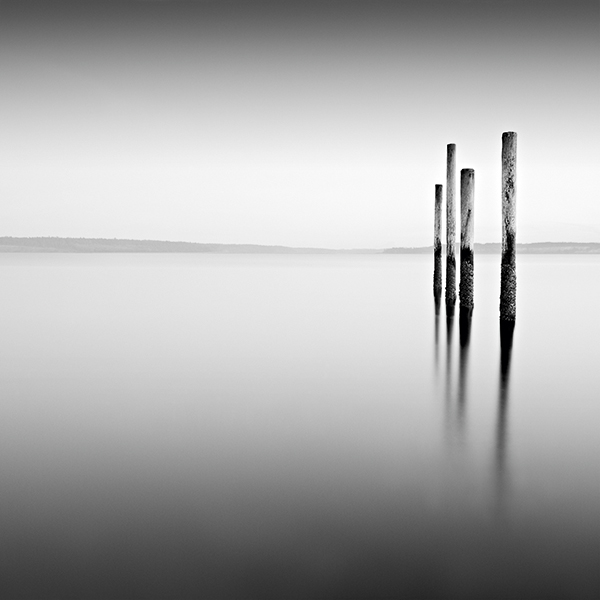B&W Fine Art: How David Fokos Uses the Passage of Time to Create Stunning, Emotional Images

All Photos © David Fokos
When the photographic artist David Fokos gives gallery talks he usually starts by showing 10 images. Then he asks the audience what words the images brought to mind.
“Not once has anyone told me what they saw in the pictures,” Fokos says. “They don’t say ‘ocean,’ ‘poles,’ or ‘beach.’ They say ‘quiet,’ ‘peaceful,’ ‘calm,’ ‘tranquil.’ Then I take out a piece of paper and show them the words they just gave me. And that’s what art is: the evoking of emotion through craft.”
Fokos’s images are not so much photos of places, but rather the emotions he felt while he was there, and when he prints his photographs, his objective is to evoke those emotions in the viewers of the images.


The Missing Element
The capture of emotion in images didn’t come easy. Fokos says he photographed for 15 years before he made any photographs that represented what he was feeling.
The breakthrough came when he realized that the camera was not capturing what he saw. “Our perception of the world is based on time,” he says. “We don’t perceive or experience our environment in fraction-of-a-second snapshots. Photograph a wave hitting a rock and you get a frozen claw of water, but that’s not what you saw when you took the picture.”
Fokos needed to reveal what was happening naturally over a period of time. “We don’t see it happening, of course, but when we look at the image, it feels right.” When he began to take longer exposures—“to use the camera to translate my experience over time into a visual form”—he was able to depict and communicate his emotions.
“The painter David Hockney experimented with photography for five years,” Fokos says, “and something he talked about was instrumental in my understanding the idea of time in an image. He said that duration is life, and that a photograph has no duration—no past, no future, just a moment. That observation was profound for me. I think he was exactly right, but I also think I’m able to kind of encode the element of time—the story of movement over time—in my pictures.”



The Ways and Means
David Fokos’s camera for most of his 30-year career, the one he used to make the photos you see here, is an 8x10 wooden field camera he estimates was made in 1929. He still uses it, though these days he also shoots with two digital cameras: a medium format and a mirrorless.
Adding the digital cameras was, he says, “just a matter of the advance of technology. I make large prints, so I needed the resolution I got with the 8x10, and now I can get it. Ultimately, though, cameras are tools, and I’ll use whatever tools are capable of achieving what’s in my head.”
The advantage of his digital tools is an endless number of frames rather than the 12 sheets of Kodak Professional Tri-X he takes along when shooting with the view camera. The disadvantage is not having the 8x10’s 80-square-inch view on the ground glass. “I got used to all that real estate when viewing and composing the image,” he says.
For view camera exposures he meters the scene with a handheld spot meter and employs a simplified version of the Zone System. “I find the darkest shadow area in which I want to preserve detail. I meter that area and place it on Zone 3.” With the digital cameras he uses their built-in meters, gets immediate feedback, and makes adjustments as needed. Regardless of the camera, the deliberate, meticulous, and painstaking care he applies to the entire creative process is a constant.
Post-processing can take up to 100 hours for a scanned 8x10 negative or a digital camera’s file. In Photoshop he’ll typically make many local contrast and exposure adjustments, use a number of gradients and other controls, employ digital dodging and burning, and often do a precise cleanup of specific areas of an image.
“I’m taking viewers on a trip,” Fokos says. “I figure out where I want them to enter the frame, where I want them to go, where I want to focus their attention. I’m looking to add back into the image the emotion I felt when I was there.”



What’s In Fokos’s Gear Bag
“In general, I use one lens for each camera,” David Fokos says. “Anything I can do to minimize the amount of time I spend thinking about and fiddling with equipment, the better. With only one lens, I’m free to concentrate on composition.”
• 8x10 Korona View camera with a Rodenstock 210mm f/5.6 Apo-Sironar-S lens (29mm equivalent in 35mm photography). He composes his images within the borders of an 8x8 square marked on the camera’s 8x10 ground glass.
• Hasselblad H1 with a Phase One P45+ back and a 35mm f/3.5 HC lens
• Sony A7R II with a Zeiss Batis 25mm f/2 lens
• Pentax Spotmeter V
• Epson Perfection V750-M Pro flatbed scanner
• Epson Stylus Pro 11880 printer
There’s an extensive collection of images at davidfokos.net, plus a list of galleries across the country that display his photographs.
- Log in or register to post comments

















































